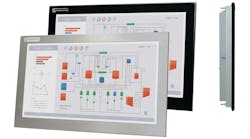I recently attended a gathering in St. Petersburg, Florida. The main goal of PMMI’s Top to Top Summit is to put consumer-packaged-goods (CPG) manufacturers together with original equipment manufacturers (OEM) to reflect on the state of the industry and take a look at what the future holds for each concern.
Having been an OEM for many years before coming over to the dark side (or is it the light side) of supporting a CPG company, I found myself with a great seat to the proceedings. It really does help to have a view from both sides of the arena, and that is exactly what the summit was all about.
The summit opened with a presentation by Peter Larkin, president of the National Grocers Association, who gave a great talk on the state of the independent grocer industry and touched on the key challenges facing his industry. A few major takeaways from this very informative review was the growth of the outside of the grocery store, diversification in the distribution chain and the impact of e-commerce.
By the outside of the grocery store, we are talking about the fresh fruits, vegetables, meat and dairy products that are typically and strategically located around the outer aisles of a store. In recent years, the outside of the store is growing larger, and the inner aisles are shrinking by comparison. People are much more aware of the benefits of fresh, scratch-made food and the desire to cut down on the preservative-laden convenience foods of the inner aisles of the grocery store.
In the past decade, the growth of big-box stores can be seen in every aspect of daily life. The initial impact on the independent grocer was a significant drop in clientele as people migrated to the one-stop shopping convenience of the big stores. The small, mom-and-pop, neighborhood grocer fought back by focusing on fresh produce and the result, as mentioned above, was the shrinking of the inner store items. National chains of stores have sprung up that offer the economic advantage of big-box in an environment that still resembles the small-town grocery store. The purchasing power of buying items in bulk and distributing them without the fancy shelf front has radically changed how consumers buy their products.
Wholesale operations, traditionally the storehouse for retail stores to buy products, have opened their doors to the everyday consumer. Not wanting to miss out on the deal, the past year has seen large growth in distribution companies who will sell directly to the home consumer, without the need for a store front at all.
The growth of e-commerce has been phenomenal, and the impact on the grocery business is only just beginning. With startup companies now offering home delivery of fresh, already-chopped-up ingredients, the home-cooked meal is becoming a trend among the younger generation, who seemed to miss that very important step in their upbringing. We somehow became addicted to convenience and lost the ability to produce for ourselves. The return to basics, to use the vernacular of the day, is going viral and any company that wants to stay in view must take this into consideration to stay competitive.
So, how does all this relate to the design of equipment? Well, to begin to understand this we need to look no further than the ever-changing world we live in. The focus on whole foods implies that people care about what they consume. They want to know what they are putting in their bodies, and they want to know where those products come from. Consumers want variety, and they want an expanded menu on the table. The companies that provide these commodities have had to respond with rapidly increasing demands, and this directly impacts the companies that produce machinery and processes to produce the goods. Plainly stated, the time to bring a concept to reality is shrinking ever smaller. Further complicating this, consumer trends are changing so fast that the product that your newly minted packaging machine produces today may not even be around next month or next year. The need to be flexible in design, form and function is never more apparent than it is right now.
The pace at which consumer demand is changing is forcing marketing folks to amp up their games in an attempt to keep their products at the leading edge of the wave. That has transitioned into a general trend away from traditional packaging formats like the standard box or bottle. “New-wave” and “hip” and “sexy” are words used to describe these new formats. Look around the store shelves these days, and you will find more than a few traditional boxes with odd angles, indents and windows, and the same is happening for bottles and other containers. In the usual, trickle-down way, changes in packaging means changes in the machine that does the packaging.
A machine designer in today’s fast-moving industry must incorporate more flexibility than ever before. The owners of packaging equipment aren’t going to want to buy a new machine every time a new consumer trend goes viral. The practical alternative is to make machines that have a base function and then add exchangeable stations that can be retrofitted to the existing machine as the trends come and go. Managing these inserted options will be a key element to a new control design.
Another key takeaway from the Top to Top Summit was the continued need for better cooperation and even partnerships between not just machine builders and machine users, but between machine builders and machine builders. There is a shortage of skilled technical people, at least in North America, and that means coming up with creative ways to share the resources that do exist. Partnerships based on confidentiality agreements are an important part of these co-dependent relationships. CPG manufacturers are asking OEMs to work voluntarily with other OEMs to provide turnkey systems. This puts a whole new level of responsibility on the machine designer, as now you’ll be asked to give competing business entities a peek under the tent as you provide your client with an integrated system.
The subjects of IIoT and big data came up in many conversations at the conference. The CPG manufacturers were asked if they thought that they needed data from the machines they buy from the OEMs. There was a general consensus that data is a nice commodity, but there wasn’t a firm opinion that every machine should be spewing forth data onto an enterprise network. The CPGs would like to have more data at hand but are reluctant to spend large capital to get that data where it needs to be. The OEMs countered that they couldn’t commit resources to providing data for enterprise data collection without an increase in the cost of a machine.
A sidebar that came out of the big-data topic was that many CPG manufacturers are faced with older packaging equipment and processes that provide a particular challenge when trying to get into the better-data-better-decisions mindset. One trend that was mentioned was the use of third-party companies with pre-canned data-collection applications. Running on smart phones and tablets, these software-based solutions rely on simple, local data points (smart relays or micro-PLCs) to provide OEE data to a server. The application then disseminates the data into useful dashboards and reports. The surprising revelation was how many of the CPG manufacturers in attendance were actually engaged in launching projects of this nature right now. Some of the larger CPG manufacturers admitted to trying some data collection on their own over the years and found the experience to have left them with a large capital outlay that didn’t have the desired results.
Finally, one topic that was on everyone’s list, CPG and OEM alike, was the lack of good technical people. Current trends show us that the base of experienced technical people is at an all-time low point and that poses a serious impediment to CPG manufacturers who are looking to buy new machines and processes. A day of reckoning will come when we will be forced to either slow down the use of new technologies or find a way to engage the younger generation in a way that will draw them to jobs such as supporting the machines and processes of today and tomorrow.
The world is changing, as it always will, but it seems that, for controls and machinery design, it is changing faster than we can keep up with it. The trend over the past 10 years has been to make machines more intelligent by packing more and more technology into the control system. With consumer trends changing faster than the technology can keep up with, perhaps the next few years will point design in a new direction where the focus will return to function, with technology being a convenience to the design, rather than the focus of it.






